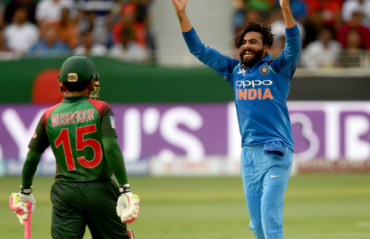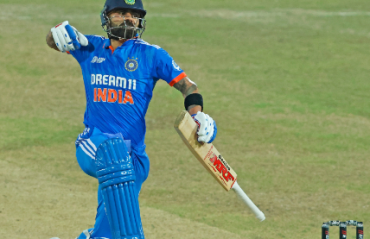How 175 Led to 83 by Vinay Kanchan
- By Vinay Kanchan
- December 27, 2021
The recent release of the Bollywood movie ‘83’, has rewound the clock 38 years, and has ushered back in public conversations memories of one of India’s most epic triumphs ever.
India’s victory at the Prudential World Cup of 1983, was a tectonic event; not just in sporting and cultural terms, but also in the mindset of a young, independent nation. But perhaps that monumental milestone was truly catalysed by another number which emerged during the course of that tournament, and has towered ever since.
175.
Actually 175 not out, to be precise.
On one hand, what made this victory extra special was that India, the complete outsiders in this tournament, beat the West Indies – a side which has been considered by many (and still is) as the best cricketing unit ever to assemble on a pitch – twice over the course of the competition. Once in the opening game, and then, famously, in the final at Lords.
Yet it might all have not come to pass.
India, despite its unprecedented start, might have fallen at the group stage itself, as it regularly had in the previous two editions of the tournament.
Post inflicting that first ever defeat on the Calypso Kings, India beat the dangerous Zimbabwe. However, things turned as skeptics might have predicted, with both Australia and the West Indies (in the return fixture), overcoming India quite comprehensively.
And, when on a day the BBC television crew chose to be on strike, India was tottering at 17 for 5, at Tunbridge Wells against Zimbabwe (the second time around); many began penning the ceremonial obituary about how India was really not quite cut out for the aggressive, limited overs version of the game.
But when belief was about to go on long leave, one courageous rebel pulled it back and barred it from leaving the premises.
That man was India’s young captain – the brilliantly talented Kapil Dev.
Sunil Gavaskar had always mused how naturally gifted Kapil was when it came to batting. However, the onus of single-handedly carrying India’s bowling attack, after the decline of the great spinning quartet had largely remained his focus. Sure, there were some brilliantly cavalier innings the man had essayed, as he quickly rose in stature to become one of the ‘big four’ all-rounders in the game. Innings’ which transformed matches. And yet, there always seemed like there was so much more to his repertoire.
That was on change that day.
Kapil Dev played probably the most astonishing innings ever seen in the limited-overs format till that time, and maybe even since.
Taking charge when India was hovering on the brink of elimination, he built a big total, forging crucial partnerships with the Indian tail which wagged like it seldom had before. And even given the difficult circumstances, it was far from a dour innings; actually, anything but. It was littered with a jaw-dropping 16 fours and 6 towering sixes, where he put nearby flights under constant risk. He took only 138 balls to chalk up his score, which is pretty brisk even by today’s ‘batting friendly, bowling impaired’ standards in limited overs cricket.
While some might say “it was only Zimbabwe”, what should not be forgotten is that Zimbabwe had a potent seam attack in that tournament, which had famously upset the powerful Australians in their first match. That, with the shaky score when Kapil took guard, and the fact this was virtually a ‘must win’ game further support the status of this innings as one of the very greatest.
Yet, impressive as all that was, the effects of that innings which transmitted far beyond the pitch, were even more spectacular.
For a nation huddled around transistor sets, hearing a modern-day miracle unfold, it was perhaps a statement of India’s potential. It showed us all how things could be turned around in even the most precarious situation. It painted a picture of the need for controlled aggression, even when one’s back was to the wall. It inspired a billion people about how even when the situation seemed hopeless, hope could always be kindled.
It was not as if Kapil Dev was batting for just the Indian cricket team, it was more like he was batting to prop up the psyche of an entire nation.
That innings was probably a tipping point not just in Indian sporting history, but perhaps one in its cultural ethos as well. Indians felt they could venture abroad and win even in those conditions. At business, politics, sport, and in other aspects of life. It was a triumph for us all, a shade before the actual cup was raised on that unforgettable day at Lords in 1983.
Eventually, with a touch of mathematical irony though, it was the number 175 which paved the way for 83.
(Vinay Kanchan is the author of ‘Sportivity’, ‘Lessons from the Playground’ & ‘The Madness Starts at 9’. He is the patron saint of Juhu Beach United, a footballing movement which celebrates the ‘unfit, out-of-breath working person of today’.)





























